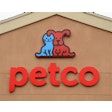
On the heels of the lingering pandemic, which dramatically increased pet owners' use of e-commerce and reduced brick-and-mortar pet retail visits, high gasoline prices have added another factor encouraging pet owners to shop from home and reduce trips to the store. Likewise, inflation may influence dog, cat and other pet food and treat purchasing behavior, as may rising commodity prices.
“Our data shows online-only sales of pet products have increased year over year since the pandemic began, with trips online increasing more than 36% while trips to brick-and-mortar locations grew at only 5% for pet specialty retailers,” Raha Alavi, SVP of retail client services, NielsenIQ. “The number of in-store buyers overall was up 2%, while online buyers grew 23%.”
In 2020, pandemic-related movement restrictions caused prices at the pump to plummet and oil to languish in tankers. Now, the opposite has occurred. Not only are people traveling more, but the global supply of petroleum has also been shaken by Russia’s invasion of Ukraine. As the Russia-Ukraine War enters its second month, oil and natural gas supplies from Russia have been disrupted, raising prices. Compared to the murder and devastation in Ukraine, high gas prices don’t seem like much of a hardship. Nevertheless, pet owners’ behaviors may be affected by pain at the pump.
“To highlight how consumers adjust their behaviors due to rising gas prices, prior NielsenIQ research shows the top five saving strategies related to rising gas prices include: 67% combine shopping trips; 45% eat out less; 36% use more coupons; 36% shop closer to home; and 31% buy less expensive brands.”
Inflation, commodity prices affecting pet food
Even before gas prices rose dramatically, other costs were weighing on pet owners.
“Inflation is also impacting pet products with prices jumping +13% for the category in February 2022, now outpacing total CPG inflation of +10%,” Alavi said. “Compare that to January when both CPG and the pet category reported an increase of +9% — so now pet products have surpassed CPG.”
“Additionally, pet category ingredient costs are being influenced by the rising cost of meat and commodities such as wheat and corn, which jumped +37% and +21% respectively in 2022,” she said.
Problems with inflation, commodity prices and fossil fuel supplies don’t seem likely to resolve themselves anytime soon. An ongoing war, pandemic and supply chain disruptions may continue affecting the pet food industry, as the ‘20s continue to be a tumultuous decade.
















